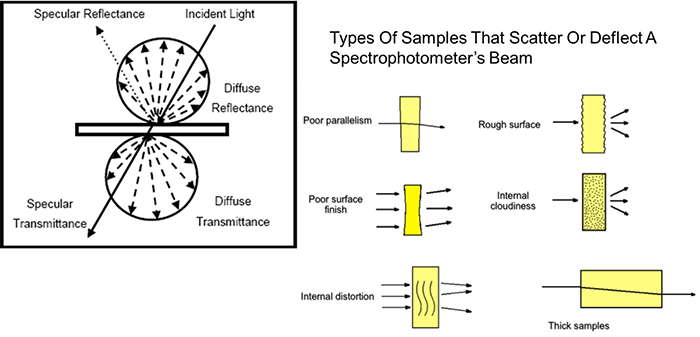My sample’s not a liquid, now what do I do?

By far the most common application in UV/Vis spectrophotometry is the measurement of liquids in cuvettes. However, high performance UV/Vis and UV/Vis/NIR instruments are more commonly used for material’s characterization, which is an area dominated by solid samples. The diagram above shows the various transmission and reflection modes for a clear solid sample. A transparent or semi-transparent sample can exhibit reflection, both specular and diffuse, and transmission, both specular and diffuse. The diffuse mode arises from particle scattering of the sample. Diffuse reflection is also called back-scatter, while diffuse transmission is called forward scatter and both are typically generated by rough surfaces. Specular reflection and transmittance is the product of non-scattering smooth surfaces. If a sample is opaque it can only produce diffuse reflectance or specular reflectance depending on its surface characteristics. The accessory of choice for solid samples is the integrating sphere. Integrating spheres are able to perform a variety of measurements on transparent, translucent, and opaque solid or liquid samples.
A spectrophotometer functions by first performing a background correction (autozero) to calibrate the 100% T (0 absorbance) value. It is crucial that placement of the beam on the instrument’s detector be the same for both the background and sample measurement. If the beam changes either placement or shape during these two measurements, artifacts (inaccurate photometric values) can occur. Spheres can minimize this problem because the detector in a sphere is “looking” at the entirety of light integrated over the surface of the sphere. A sphere eliminates many types of artifacts for a variety if non-ideal samples. Sphere scatter transmission measurements are made by placing the sample on the scatter transmission port on the front of the sphere.


